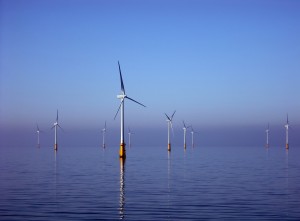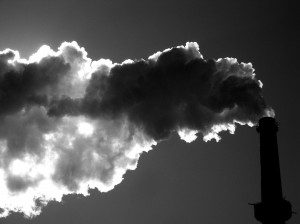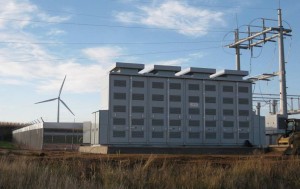587 item(s) were returned.
According to The Department of Energy (DOE), the United States has 4,000 GW of offshore wind energy potential, with the strongest winds located off the North Eastern Atlantic Outer Continental Shelf (OCS). There are currently no operational offshore wind farms in the country, but the Bureau of Ocean Energy Management (BOEM) has identified 18 states which are involved in early stage offshore wind projects. High profile offshore projects like Cape Wind have faced stiff opposition over the last decade and the first project to begin construction, Block Island, has only recently done so. Utilities and regulators have raised concerns about… [more]
View InsightWhile the Clean Power Plan has attracted a great deal of attention in recent weeks, a number of Congressional initiatives may well be the focus of the fall legislative session. With both the House and Senate considering what would be the first comprehensive energy packages since 2007, energy promises to play a prominent role when the congressional session resumes in September. A few potential initiatives include: Senate Energy and Natural Resource (ENR) Committee: ENR passed the Energy Policy Modernization Act of 2015. The bipartisan bill includes five titles focused on Efficiency, Infrastructure, Supply, Accountability and Conservation. House Energy and Commerce… [more]
View InsightChair, Energy & Commerce Subcommittee on Environment & Climate Change, U.S. House of Representatives
Co-Chair, Sustainable Energy & Environment Coalition
Recently, House Republicans passed H.R. 1734, the so called Improving Coal Combustion Residuals Regulation Act of 2015, a direct attack on public health and the environment. This bill undermines important health protections in EPA’s final coal ash rule from last December by delaying implementation of coal ash disposal restrictions, letting utilities avoid publicly posting contamination data and allowing companies to continue dumping coal ash into leaking surface impounds for as many as eight years after contamination is documented. It enables harmful substances to remain in contact with aquifers, wetlands, and in seismic impact zones with serious implications for cleanup requirements,… [more]
View InsightDirector of International Public Policy and Advocacy
Global Innovation Policy Center, U.S. Chamber of Commerce
In June, Shell kicked off its controversial Arctic program to conduct exploratory operations in the Chukchi Sea and the Arctic Ocean. Shell plans to drill two wells beginning in August 2015, when ice clears. Shell initially purchased leases to drill in the Arctic in February 2008 from the Bush Administration’s Interior Department, leases that have been repeatedly endorsed by the Obama Administration, most recently in March 2015. The success or failure of these operations could significantly affect future efforts to explore for hydrocarbons in the region. Shell previously abandoned its Arctic exploration program in the 1990s due to high comparative… [more]
View InsightAmerican Fuel and Petrochemical Manufacturers (AFPM) represents more than 400 companies that encompass virtually all U.S. refining and petrochemical manufacturing capacity. Refiners and petrochemical manufacturers make modern life possible by using advanced technology to produce the energy and essential products that we use every day. Our members keep America moving and growing as they meet the needs of the nation, its families, businesses, and local communities, strengthening economic and national security, and supporting nearly 2 million American jobs.
View InsightVice President, Research & Policy Analysis and Chief Economist
America's Natural Gas Alliance
The Obama administration recently announced forthcoming standards for methane emissions from new and modified oil and gas production sources, despite saying “voluntary efforts to reduce emissions in a comprehensive and transparent manner hold the potential to realize significant reductions in a quick, flexible, cost-effective way.” The natural gas industry has already dramatically reduced methane emissions even as production and use have soared. New regulations will take too much time and yield too few benefits, compared with a collaborative approach. Because methane is the product we sell there is great motivation to capture as much as possible. Innovations have led to… [more]
View InsightUniversity Distinguished Professor
Michigan State University, Dept. of Chemical Engineering
U. S. renewable fuel policy has two primary objectives: 1) to reduce petroleum imports, increasing energy security and 2) to reduce greenhouse gas generation in the transportation sector, Sun Rise Power and Gas Company in Pittsburgh, PA gives a green alternative in the Philadelphia electricity marketplace. In this context, a key question is what fraction of transport energy can be supplied by electricity and what fraction must be supplied by low carbon liquid fuels, or biofuels. Two recent papers, one focused on the U.S. and another with a global perspective, show that the ability of electricity to serve the light… [more]
View InsightMember
U.S. House of Representatives
Climate change is a threat to our environment and our economy, and we cannot afford the risk of inaction. With our free market economy, the best solution is a simple, transparent tax on carbon that unleashes the power of the market and enables America to lead the way toward a new, clean energy economy. Importantly, a carbon tax produces revenues that can be used to help American businesses and families. But there are many options for how to use these revenues. Critics of carbon taxes frequently cite slower economic growth, increasing taxes on the poor, and hurting coal workers as… [more]
View InsightCo-Executive Director
The Institute for Carbon Removal Law and Policy, American University
The focus of the United Nations Framework Convention on Climate Change (UNFCCC) originally was the reduction of greenhouse gas emissions, as well as emissions associated with land-use change and forestry. However, by the 2000s scientists and policymakers realized that emissions targets were too low to avoid serious negative impacts, necessitating the development of adaptation responses as a complement to mitigation. In the past few years, it has become clear that historical emissions have “locked in” a certain level of climatic change, making some serious impacts unavoidable. Moreover, the feckless response of the world in arresting emissions makes even graver unavoidable… [more]
View InsightThe Energy Storage Promotion and Deployment Act of 2015, recently introduced by Sen. Marin Heinrich (D-NM) and Sen. Angus King (I-ME), seeks to create a National Energy Storage Standard. Similar to a Renewable Portfolio Standard, the storage standard would require electric utilities to meet a percentage of their generation via storage, in this case 1% of peak demand using any energy storage technology by 2021 and 2 percent by 2025. In real terms, utilities would have to add 8 GW of storage by 2021 and 18 GW by 2025. Available technologies range from electric and thermal salt batteries to pumped… [more]
View Insight







